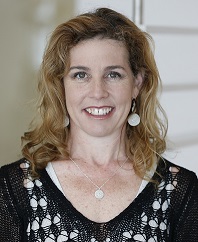 Sheryl Lewin, MD, is a board-certified plastic surgeon dedicated to pediatric ear reconstruction. She has performed more than 800 surgeries for children with microtia, a congenital condition in which the ear does not develop correctly.
Sheryl Lewin, MD, is a board-certified plastic surgeon dedicated to pediatric ear reconstruction. She has performed more than 800 surgeries for children with microtia, a congenital condition in which the ear does not develop correctly. Dr. Lewin is the founder of Earicles, a non-profit devoted to providing surgical care, education, research and advocacy for the children and families affected by microtia. She performs the majority of the reconstructive ear procedures at K and B Surgical Center in Beverly Hills, Calif. Dr. Lewin offers insight into her non-profit work and the role K and B Surgical Center has played.
Question: How did you first decide to focus on microtia?
Dr. Sheryl Lewin: When I finished my residency training and fellowship, I knew that I was going to dedicate my work to pediatric plastics. Ear reconstructions are some of the most technically difficult procedures to perform, and some of the most rewarding.
Q: Where did the idea for your non-profit originate?
SL: A couple of years into practice, I received an email from a parent. Her child was 11 or 12 years old and had already undergone seven failed operations for microtia. I remember thinking that I could help kids like this.
When I established my own practice, I began work with my non-profit. I remembered this girl and contacted her mother. She became one of our first patients.
Q: What is the main focus on your non-profit?
SL: Earicles provides free and reduced cost surgical care for kids with microtia. We also concentrate on research, advocacy and education. There are a number of routes to addressing this issue. This year we will hold four conferences that will be internationally attended. We will have the opportunity to educate families and hear stories from patients that have gone through the process.
Q: What has K and B Surgical Center done to prepare for the microtia procedures it hosts?
SL: The bulk of the procedures are performed at K and B Surgical Center. I strictly require pediatric anesthesiologists for every case I do. The anesthesiologists I have worked with are amazing and highly focused on the latest in airway safety. A lot of these kids have jaw and facial deformities. You need experienced anesthesiologists and advanced technology.
An ASC is a business, but K and B has a huge heart. All of the staff members become extremely involved and the center has been tremendously supportive of Earicles. In the year and a half I have been with K and B, it has supplied free surgical care for all of my kids and helped support the Earicles conferences.
Q: What technique do you use during these procedures?
SL: I perform Medpor ear surgery. Medpor is a material of a porous nature, a unique property which allows the body's tissue to grow within the structure of the implant. We cover the implant with a thin layer of tissue taken from under the scalp. The entire procedure takes eight to 10 hours and the patient can go home the same day. It can be performed on a child as young as 3 years old. Other techniques generally need to wait until a child is 7 or 8 years old. We have never had any adverse events or hospital transfers.
Q: What do you think has been your greatest accomplishment with Earicles thus far?
SL: Thus far, I have taken this procedure, which I learned in 2004, and have been able to innovate surgical techniques that have taken it to a much higher level. It has allowed me to create very natural ears in a relatively pain free way, all in an outpatient setting. My greatest accomplishment, for the work I do, is the reward I receive. It is hard to describe. Families say that I have changed their lives. Kids thank me.
Recently, we treated a 16 year old from Ecuador. Even after getting sedation, he stopped us all before the procedure to thank us.
Q: What do you have planned for the future of your work with microtia?
SL: I am looking into research for more realistic, longer lasting implants. Medpor has been very successful used, but it is a hard substance. I am looking for a way to create a more flexible implant.
Q: Do you have any advice for other ASC physicians considering non-profit work?
SL: It is more or less a labor of love. Whatever you are passionate about, it shines through when you talk to others. It is infectious. I found starting this non-profit was easy and spontaneous. Everyone I approached wanted to help out.
More Articles on ASC Issues:
2014: A Promising Year for De Novo ASC Activity?
Polishing the 3-Way Partnership: 5 Priorities for Joint Venture ASCs in 2014
Ambulatory Surgery Center Leadership Profile: Specialty Surgery Center Director Phillip Santillanes
